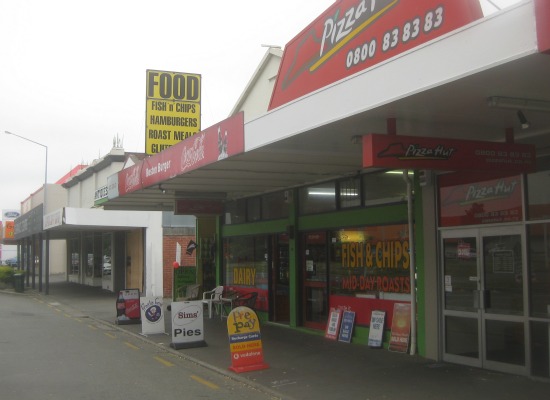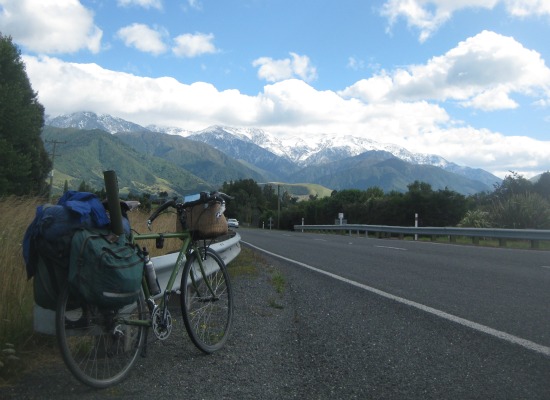New Zealand: What’s Hot and What’s Not
From Stewart Island in the south to the Surville Cliffs in the north, New Zealand is a country almost as geographically diverse as the United States
/https://tf-cmsv2-smithsonianmag-media.s3.amazonaws.com/filer/20120302085055MountainsLakeAndrewSMALL.jpg)
With seven weeks in New Zealand’s South Island now under my belt, it’s time to take a look back at what was great about this country, and was not. I’ll start with the disappointments:
1. The lack of through roads. On the map, we see the spine of the mountains running the length of the South Island, and from north to south there are clusters of lakes and river headwaters that we would love to visit – like Lake Coleridge, Lake Sumner, Clearwater Lake, Lake Heron and others. Problem is, the roads in usually have no exit – one-way deals, whereas in other places there would usually be a dirt road that climbs over a pass and down the other side. Not here. For cyclists, there is little else more frustrating than having to ride over 20 miles of gravel and shingle all the while knowing that they’ll be seeing every foot of the way a second time. I became so frustrated by having to backtrack out of mountains that I gave up on the high country altogether several weeks ago.
2. The stock trucks. These huge vehicles, usually two-trailer arrangements, careen endlessly down the highways delivering sheep and cows to the slaughterhouses – day after day after day. Why, I wonder, can’t the meat companies utilize trains – a more fuel efficient transport method that also reduces the risk that a trucker will squash a cyclist, like me? These trucks were no more terrifying than other trucks; it’s the bloody business they were up to that makes them seem more fearsome. I would see them pass on their way north, filled with moaning animals and reeking of manure. Meanwhile, a stream of stock trucks came the other way – all empty. (I don’t eat red meat, so I can complain all I want.)

This line of eateries on a street near Ashburton showcases some of the bland cuisine of New Zealand. Granted: The author didn't try all these restaurants. Would you?
3. The food. As virtually anywhere, what sprouts from the ground in this fertile nation and swims in the sea is excellent colorful stuff. But it’s what comes out of New Zealand kitchens that lacks in luster. Consider the placards placed outside many restaurants that read “FOOD.” Food, eh? If I’d been a starving man I’d have jumped through the door, but I like some passion and artistry in what I eat. Even in the larger towns and cities, the main drags were lined with dodgy diners offering fish and chips, BBQ and game pies, a local specialty often made with farmed venison, some even with possum – and one thing that disappointed me: In seven weeks of traveling every day, I encountered not one farmers market. They occur here, but there seems to be a shortage. Meanwhile, there is, at least, growing interest in good wine and beer throughout New Zealand.
4. Too much hype about adventure-adrenaline tourism. Give me a farmers market. Give me a quiet dirt road that crosses the Southern Alps at 2,000 meters. Give me a bottle of barleywine ale that I can afford. But enough with your adventure travel packages. Skydiving, jet boats on rivers, water-skiing, bungee jumping, heli-biking and heli-skiing and, I dunno – is there heli-fly fishing? The thing is, these all have nothing to do with your beautiful country and make a lot of noise and commotion.
5. Sheep. In particular, there are way too many. They overgraze and, along with a multitude of cows, trample river banks into mud and manure. They are mammals – and nonnative – and they number, what, 40 million? Sort of like possums. Sort of like pests.
6. Finally, an underlying but potent element of racism. I encountered this several times without digging for it – Caucasian Kiwis confiding in me that increasing cultural diversity (call it immigration, if you want) is becoming a problem. “It’s really dark on the North Island,” is something I heard said at least twice. And some people told me about “the Asian problem,” though I never understood what the problem quite was. My latest incident occurred just outside Christchurch, where I stopped in at an honesty box and met the two owners. “How is Auckland?” I asked as we chatted about the North Island. The man and woman – folks in their 60s – rolled their eyes. “It’s all Asians and Islanders.” Sounds interesting to me – but they carried on. “And in Christchurch it’s becoming a problem now, too. You like Asians? Plenty there.” I do, in fact – and I asked if there was, by any chance, a neighborhood or community of Asians – with Asian grocery stores, too. They both sighed and nodded, distraught at what was becoming of their island. “Yep. Blenheim Road,” the man said, and I made a note of it. The next afternoon, I rode up Blenheim Road, visited Kosko Asian Supermarket, and there found the joy I’d been without for seven weeks: durian, the crowned king of the fruit world. I ate a full pound of the flesh that night, thinking that this must be one of the greatest pleasures of a multicultural world.
Now, the positives:
1. The Molesworth Station wilderness. A banner highlight, this was a rare back country experience that required no backtracking to get out. For there are two roads leading all the way across this almost half-million-acre farm at the north end of the South Island. I took the Rainbow-Hanmer Springs route. The region is drained by several rivers, including the Wairau and the Clarence, and off the road, out of sight, are many hidden ponds teeming with big trout. Molesworth Station also demonstrates what a fine arrangement can be made between private landowners and the government’s Department of Conservation, which encourages public access into remote areas. There is a cash entry fee required – $25 for automobiles, $15 for motorcycles, and just $2 for bicycles (thanks).
2. Honesty boxes and other roadside produce sales. I wrote about exorbitant prices early in my trip – but that was before I discovered honesty boxes, where buyers pull over to the side of the road, drop a few coins in a piggy bank-style box and grab a carton of eggs or a bag of vegetables.
3. The Southeast Coast and Catlins. While the West Coast draws millions of tourists with its glaciers, Milford and Doubtful sounds and its steaming rainforests and fern groves, the opposite side of the island has its simpler wonders – and lesser crowds. Here, quiet rolling hills of grass meet clear kelpy waters and tide pools, and small roads almost void of traffic welcome cyclists to explore.
4. No fishing license needed for ocean angling or foraging. This is a nice gesture from the government. While most travelers aren’t going to spend their days here renting wetsuits of watching the tide charts with dinner plans for lobster or mussels, by allowing passersby to spontaneously visit the beach and take home a portion of edible critters (there are legal bag limits, so do your homework before hunting), the New Zealand federal government is encouraging engagement with the country’s marvelous marine environment.

Just the sight of the Kaikoura Range, which skyrockets from sea level to almost 9,000 feet, is a thrill. These mountains are, however, almost inaccessible.
5. Outstanding scenery. They filmed the Lord of the Rings films here for a reason – simply, the landscape is often jaw-dropping, whether on screen or in real life. The Southern Alps, whose peaks are buried in snow even in high summer, may be the crowning jewel, but almost everywhere else, dramatic geography and a general absence of people make a recipe for beauty and wonders. There is greenery almost everywhere, beautiful wild rivers in the mountains, the Seaward Kaikoura Range that tops out at almost 9,000 feet just miles from the ocean, the endless fjords and waterways of Marlborough Sounds, the deep bays, hills and remote shores of the Banks Peninsula, the underwater sights to be enjoyed by snorkelers and divers and much more. From Stewart Island in the far south to the Surville Cliffs in the far north, New Zealand is a country almost as geographically diverse as the United States, crammed into a thriving, gorgeous landscape only a slivering fraction of the size.
6. Finally, Luggage Solutions. This is a lifesaver shop at the Christchurch International Airport which carries a variety of bags and packing materials, including cardboard bicycle boxes. For cyclists, this is a tremendous convenience, allowing us to truly finish a journey by riding all the way to the airport. Note: Luggage Solutions charges $25 for a used, folded, crumpled box. They’ll help you assemble and secure it adequately, but the price is a bit steep.
Planning Your Next Trip?
Explore great travel deals
Smithsonian magazine participates in affiliate link advertising programs. If you purchase an item through these links, we receive a commission.
/https://tf-cmsv2-smithsonianmag-media.s3.amazonaws.com/accounts/headshot/Off-Road-alastair-bland-240.jpg)
/https://tf-cmsv2-smithsonianmag-media.s3.amazonaws.com/accounts/headshot/Off-Road-alastair-bland-240.jpg)